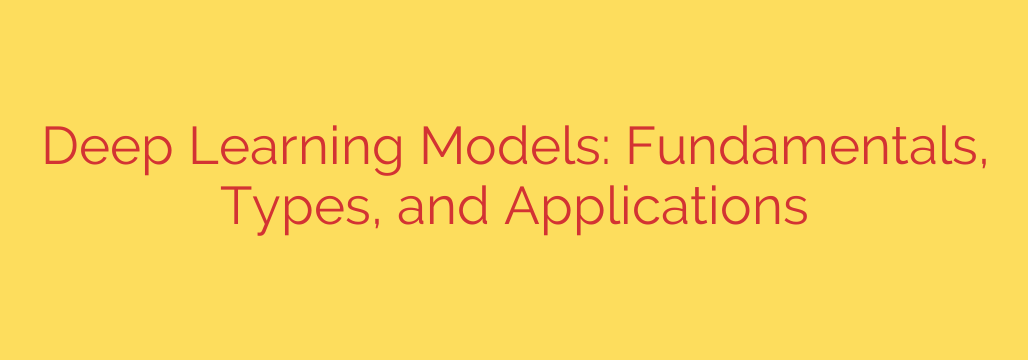
Unleashing the power of artificial intelligence hinges significantly on understanding and implementing deep learning models. These sophisticated structures, inspired by the human brain’s neural networks, are at the forefront of modern AI capabilities, enabling machines to learn and make complex decisions from vast amounts of data. At their core, deep learning models are built upon layers of interconnected nodes, or neurons. Data enters the input layer, passes through multiple hidden layers, and ultimately produces an output from the output layer. The “deep” aspect refers to the sheer number of these hidden layers, allowing the models to automatically learn hierarchical representations of data – from simple features to more abstract concepts. The process of training these models involves feeding them data and iteratively adjusting the connections (weights and biases) between neurons using algorithms like backpropagation to minimize errors in predictions. This requires significant computational resources, often relying on powerful GPUs (Graphics Processing Units).
The landscape of deep learning offers various architectures, each excelling at different tasks. Convolutional Neural Networks (CNNs) are particularly effective for analyzing visual data, driving breakthroughs in image recognition, object detection, and video analysis by automatically detecting features like edges, textures, and shapes. For handling sequential data, such as text, speech, or time series, Recurrent Neural Networks (RNNs) and their more advanced variants like Long Short-Term Memory (LSTM) networks and Transformers are indispensable. These models have revolutionized natural language processing (NLP), powering translation services, sentiment analysis, and chatbots. Another groundbreaking type is Generative Adversarial Networks (GANs), which consist of two competing networks – a generator and a discriminator – capable of creating highly realistic synthetic data, from images to music. Other architectures like Autoencoders are used for data compression and denoising.
The applications of deep learning are diverse and rapidly expanding across virtually every industry. In healthcare, deep learning aids in diagnosing diseases from medical images with remarkable accuracy. It powers autonomous vehicles by interpreting sensor data and making real-time driving decisions. Financial institutions use deep learning for fraud detection, algorithmic trading, and risk assessment. In retail, it optimizes recommendation systems and predicts customer behavior. Speech recognition technologies rely heavily on deep learning, enabling voice assistants and transcription services. Even in creative fields, deep learning is used for generating art and composing music. The continued development of these models, coupled with increasing data availability and computational power, promises even more transformative applications in the future, pushing the boundaries of what machines can learn and achieve. Mastering the fundamentals and understanding the capabilities of different deep learning architectures is crucial for anyone looking to leverage the full potential of artificial intelligence.
Source: https://www.simplilearn.com/tutorials/deep-learning-tutorial/deep-learning-models








